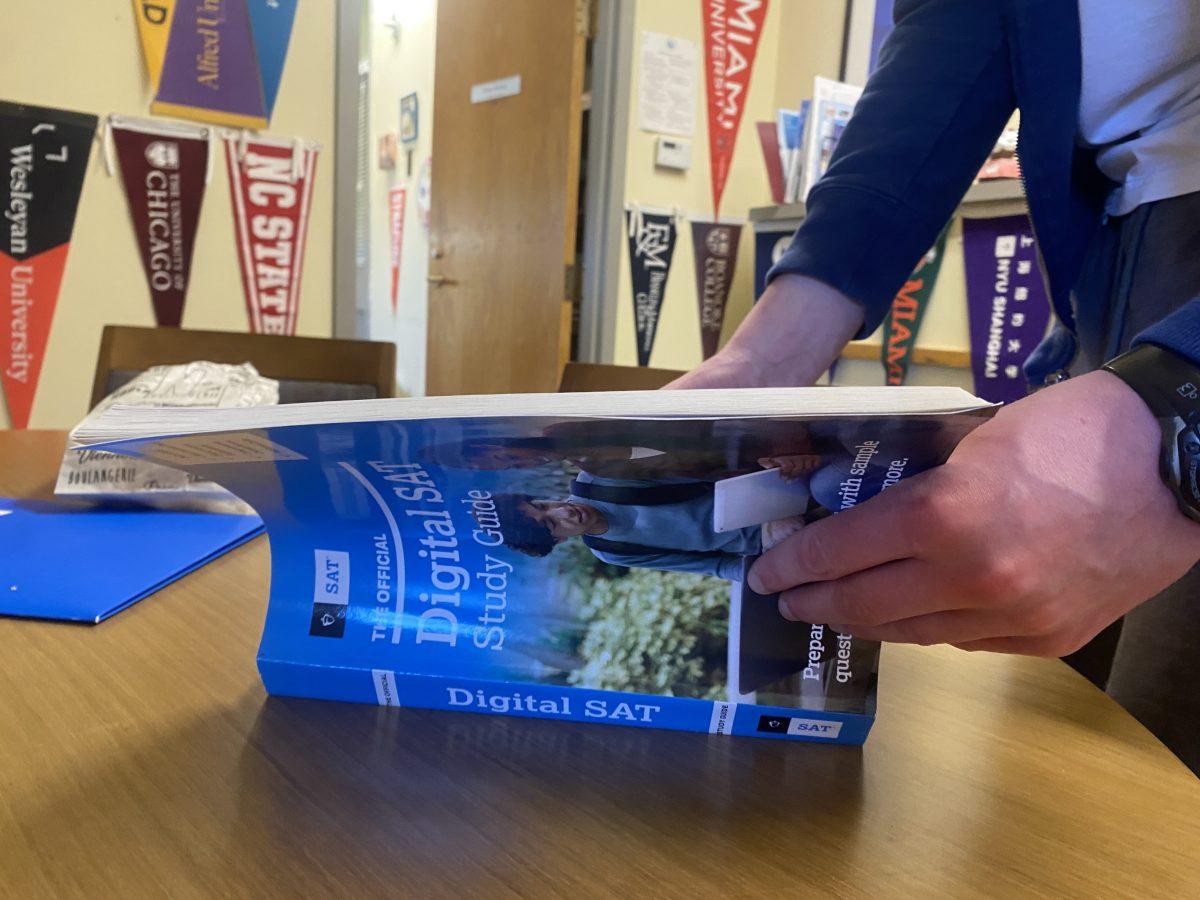
All upperclassmen know the feeling. Walking into the testing center with weeks, if not months, of experience under your belt, the butterflies in your stomach threatening to burst free, and three letters ingrained deeply into your brain: SAT. With nearly two million students taking the test per year, according to the New York Times, the Scholastic Assessment Test (SAT) is the most prevalent standardized test for students applying to college.
Created by American psychologist Carl Brigham in 1926, the SAT was intended to measure generalized educational aptitude in one assessment. Since its inception, the test has largely remained the same, covering reading, writing, and mathematics. Despite its dominance for nearly 100 years, with the sheer number of students taking this test every year, there are some inherent controversies relating to the efficacy of this assessment.
Thus, the term “standardized testing,” and more specifically, the SAT, has come to be extremely controversial. One criticism of the exam is that it is not truly “standardized” or equal for everyone, and as a result, it is not fair to compare the scores of various students. However, a study conducted by Opportunity Insights, a nonprofit at Harvard University, revealed that there is little correlation between a student’s class grades and success in college. Conversely, this same study revealed a strong relationship between test scores and college success. As seen through this study, the SAT provides colleges with a common metric to compare students across the country. Whereas grades or a student’s GPA are dependent on schedule, course rigor, or even the school, the SAT offers an opportunity for colleges to level the playing field and understand students’ academic strengths regardless of educational background.
“Whereas grades or a student’s GPA are dependent on schedule, course rigor, or even the school, the SAT offers an opportunity for colleges to level the playing field and understand students’ academic strengths regardless of educational background.”
The SAT is also the most fair and equitable aspect of the college process. Besides recommendation letters, which are beyond the scope of a student’s control, the college process can be broken down into four major categories: grades, essays, extracurricular activities, and standardized testing. As mentioned earlier, grades are heavily dependent on a student’s school, serving as a biased indicator of a student’s academic readiness for college. Essays and extracurricular activities are perhaps the most dependent on a student’s socioeconomic status. Wealthier students have more of an opportunity to try new activities and develop a more diverse portfolio compared to less-wealthy students. Moreover, affluent students have the opportunity to outsource their essays to tutors or writers during the college process, allowing their essays to appear stronger to admissions officers.
Conversely, the SAT offers an equitable opportunity for students across all economic backgrounds. Some may argue that wealthier students have a greater chance to hire personal tutors or afford resources that all test-takers may not have access to. However, the rise of free online resources, such as Khan Academy and even the testing platform Bluebook, which offers questions, explanations, test strategies, and sample tests that every student can do, help to level the playing field. Artificial intelligence also serves as a free study partner, as many technologies have increasingly been able to emulate the SAT and engineer questions vividly similar to the real test. Furthermore, the College Board offers fee waivers for students taking the test, meaning that the cost of the test should not inherently be considered a hindrance in determining how many times a student can take the test. Finally, many miss the point that while these supplementary resources can teach students how to take the SAT, they cannot take it in place of them. In front of the SAT, everyone is equal, whether you have spent thousands of dollars or no money. All students still have the same questions and environment.
Another criticism is that the SAT stifles a student’s individuality. The test forces all students to take the same reading, writing, and mathematics portions. Some argue that the identical portions, along with the recent removal of the essay, fail to capture a student’s personality and creativity. Again, this argument fails to see the bigger picture. Referring back to the aforementioned idea, the SAT is only one aspect of the college admissions process. In fact, the majority of this process presents opportunities for students to express their individuality, as shown in their essays, interviews, activities, and letters of recommendation. With this extent of subjectivity and the sheer amount of applications each school receives, there is a need for one section that is uniform across all students, which the SAT fulfills. Moreover, the new online adaptive SAT now allows colleges to compare students of similar academic skills. To that extent, the SAT is necessary, as it sets all students against the same standards and lets colleges weigh them similarly.
“In front of the SAT, everyone is equal, whether you have spent thousands of dollars or no money. All students still have the same questions and environment.
Every year, the SAT is likely to generate controversy amongst students, parents, and even educators. What these individuals fail to recognize is that this exam is the strongest indicator of academic caliber, it is the most equitable aspect of a student’s college application, and, above all, it is a standardized means to compare students of all backgrounds. In other words, the SAT is good, it is fair, and it is necessary. Thus, before criticizing this exam, whether that be due to recency bias or pure hostility, it is crucial that everyone realizes the unique advantage and value the SAT holds.
